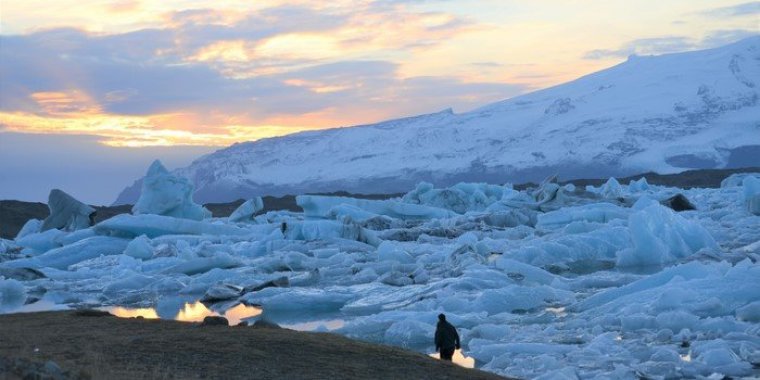| News / Science News |
Why did glacial cycles intensify a million years ago?
About a million years ago, something big happened to the planet. There was a major shift in the response of Earth's climate system to variations in our orbit around the Sun.

Ice from Iceland's Breiðamerkurjökull Glacier is on its way to the Atlantic Ocean. Photo: Kevin Krajick/LDEO
That shift is called the Mid-Pleistocene Transition, or MPT. Before the MPT, cycles between colder glacial and warmer interglacial periods happened every 41,000 years.
After, glacial periods became more intense -- intense enough to form ice sheets in the Northern Hemisphere that lasted 100,000 years. That gave Earth the regular ice age cycles that have persisted into human time.
Scientists have long puzzled over the trigger. A likely reason could be a phenomenon called Milankovitch cycles -- cyclic changes in Earth's orbit and orientation toward the Sun that affect the amount of energy Earth absorbs.
That, scientists agree, has been the main natural driver of alternating warm and cold periods for millions of years. However, research has shown that Milankovitch cycles did not undergo a change one million years ago, so something else likely was at work.
Coinciding with the MPT, a large system of ocean currents that helps move heat around the globe experienced a severe weakening. That system, which sends heat north through the Atlantic Ocean, is the Atlantic Meridional Overturning Circulation, or AMOC.
Was this slowdown related to the shift in glacial periods? If so, how and why? A paper proposes an answer.
"These scientists present new geochemical data from Atlantic Ocean sediments that address a longstanding puzzle -- the cause of a shift roughly one million years ago in the pacing of major Northern Hemisphere glaciation," said Dan McCorkle, a program director in NSF's Division of Ocean Sciences.
"The new data point to an important role for the links among glacial erosion, changes in ice sheet thickness and global climate cycles."
The geoscientists analyzed cores of deep-sea sediments taken in the South and North Atlantic, where ancient deep waters passed by and left chemical clues.
"What we found is that the North Atlantic, right before this crash, was acting very differently than the rest of the basin," said lead author Maayan Yehudai, formerly of Columbia University's Lamont-Doherty Earth Observatory and now of the Max Planck Institute for Chemistry.
Prior to that ocean circulation crash, ice sheets in the Northern Hemisphere began to stick to their bedrock more effectively. That caused glaciers to become thicker than they had before, and in turn led to greater global cooling and disrupted the Atlantic heat conveyor belt. In turn, these changes led to stronger ice ages and the ice-age cycle shift.
The research supports a long-debated hypothesis that the gradual removal of accumulated slippery continental soils during previous ice ages allowed ice sheets to cling more tightly to the older, harder crystalline bedrock beneath.
The findings indicate that this growth and stabilization just before the weakening of the AMOC shaped the global climate. (National Science Foundation)
YOU MAY ALSO LIKE





